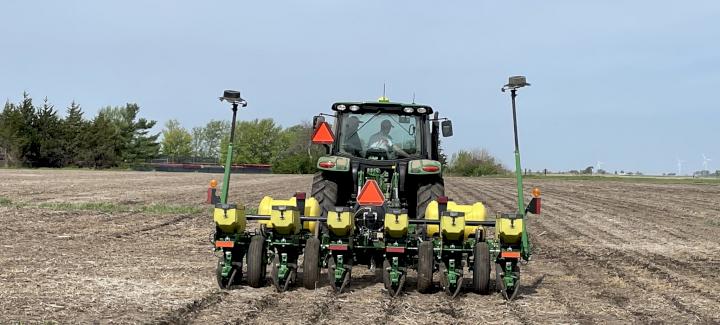Each year, Stine’s agronomy team is tasked with planting and monitoring our corn and soybean plots throughout the U.S. These plots are typically planted for a few different purposes: 1. To showcase our products to our grower customers in real time; 2. To use as educational resources for our sales representatives; 3. To research product data and evaluate performance in specific environments; and 4. To test how our experimental products perform before they launch in the market.
As Stine’s director of agronomy, Tom Larson’s No. 1 goal for all our sales reps is to better understand the products we have in the pipeline.
“Previously, we were typically focused more on monitoring our current products through our corn and soybean plot program. Now, we’re testing Product Development Plots, which will include 80% new material. We hope this will give us a better understanding of how these products perform in different environments before they’re commercialized.”
PRODUCT DEVELOPMENT PLOTS (CORN AND SOYBEANS)
The purpose of our Product Development Plots is to evaluate high-yielding corn hybrids and soybean varieties from our Elite Yield Trials in addition to competitor products before commercialization. The information gleaned from these plots will aid in selecting future products.
Corn Product Development Plots are planted by height and maturity at a minimum of 12-row plots with the center six rows harvested. These plots are a minimum of 300 feet in length. We employ flag emergence studies at each plot, which helps us evaluate emergence and season-long performance. We have glyphosate and non-glyphosate products, and all corn plots will have two competitor products listed as EXP.
Soybean Product Development Plots are planted by maturity, with a minimum of eight rows and a plot length of at least 400 feet. The planting population is capped at 140,000 plants per acre per plot. We also have two competitive products listed for each soybean plot as EXP.
Specific agronomic data collected in these plots will include disease ratings; general plant observations; plant, ear, leaf and tassel height (in corn); silking (in corn) and pollination dates; test weight, moisture and yield; and harvestable ear percentage (in corn). These plots also help train our regional sales agronomists.
“At the end of the season, we’ll have reviewed 80 different agronomic attributes on each product,” said Larson.
OTHER CORN AND SOYBEAN PLOTS
Success Plots (Corn and Soybeans)
Our Success Plots are planted to train our sales team and for general observation by our grower customers, dealers and prospective customers. We don’t tabulate yield with these plots; rather, they are made available so those interested can see what the products look like in their local environment.
We have both corn and soybean plots in our Success Plots Program. These typically showcase no more than four rows of different Stine® products and a competitive product or two. Both corn and soybean plots are planted by relative maturity and population percentage. We use similar maturity, traits and features in both corn and soybean plots.
Seed Treatment Trials (Corn)
“Through our Seed Treatment Trials, our goal is to test how different treatments perform with our corn seed,” says Larson.
“And we’re not putting treatment packages on top of already treated seed. We’re using bare seed — seed that hasn’t been touched by any other products.”
The data collected from our Seed Treatment Trials allows us to provide growers with more scientific information about how specific corn treatments perform under certain conditions, including weather elements, variable soils, and heavy disease and insect pressure.
Side-by-Side Comparison Plots
These plots are actually planted by our grower customers. While not technically plots, they provide growers a more holistic view of how a Stine product stands up to competitors. Our Side-by-Side Comparison Plots can have up to 20 acres of each product, which is usually a Stine product planted next to a competitor product of similar maturity and features. We work with our growers to employ these plots if they plant 100% Stine seed.
Farm Progress Show Plot (Corn and Soybeans)
The Farm Progress Show will be held in Decatur, Illinois, this year from Aug. 29–31. We planted our annual show plot on May 2, courtesy of Stine grower customer and Farm Progress Show host David Brix. The plot contains four corn hybrids, including MX441-G, MX601-G (new), MX710-G and 9817-30. For soybeans, we also planted four: 28EG29 (new), 33EG02 (new), 37EG23 (new) and 39EC22.
“This year’s Farm Progress Show plot will have some short-stature corn products,” says Larson. “We look forward to showing attendees the difference in height with this material, as well as their overall performance and standability.”
HOW DO I SET UP A TOUR OF A STINE CORN OR SOYBEAN PLOT THIS SUMMER?
Viewing one of our corn and soybean plots this summer is as easy as contacting your local Stine sales rep. If you don’t have their information, use our Find Stine tool on our website or locate your nearest regional sales agronomist or Stine seed dealer.

